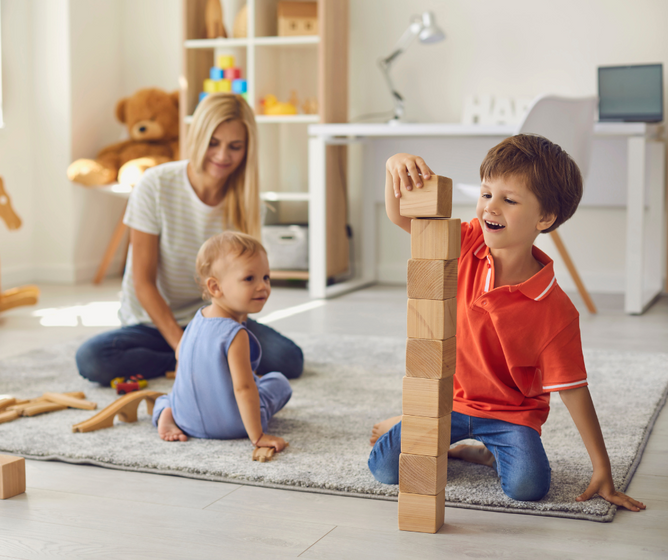Are you struggling to keep up with your child's seemingly endless Zoom classes and homework? It's no secret that transitioning to a home learning environment can be challenging. But with a little creativity and effort, you can design a productive and engaging space that supports your child's academic success.
Why is a productive home learning environment important? Because it sets the tone for your child's academic experience. With the right space, your child can get the most out of their education and feel motivated to learn. But without it, they might struggle to focus and fall behind.
So, let's dive into the challenges of home learning and how to create a space that fosters success and engagement.
Designing Your Home Learning Space
Let's face it: learning from home can be challenging. Keeping your child engaged in their studies while they're surrounded by distractions is no easy feat. That's why it's crucial to design a space that encourages focus and productivity.
Start by choosing a designated area for studying. It could be a spare room, a corner of the living room, or even a spot in the kitchen. The key is to find a space that's quiet and free from distractions like the TV or video games.
Next, create a comfortable environment. Invest in a quality desk and chair, and make sure your child has plenty of space to move around. Consider adding soft lighting and decorations that inspire creativity.
But don't forget to optimize your lighting and temperature as well. A poorly lit room can strain the eyes, leading to headaches and fatigue. And a room that's too warm or cold can lead to discomfort and distraction.
By designing a space that's comfortable, well-lit, and distraction-free, you're setting your child up for success. And that's the first step to creating a productive and engaging home learning environment.
Implementing a Routine
Welcome back! We've already talked about the challenges of home learning and why a productive and engaging environment is important. Now, let's dive into one of the essential elements of creating such an environment: implementing a routine.
Organizing your child's day can seem daunting, but it does not have to be. Creating a schedule is an excellent way to provide structure and routine to your child's day, and there are plenty of examples out there to take inspiration from.
But don't forget to incorporate breaks and physical activity into the schedule. It can be quite challenging for young learners to sit at a desk for an extended period, and studies show that physical activity boosts attention and working memory.
Setting goals and rewards is another way to keep your child engaged and motivated. Goals give them something to work towards, and when they inevitably achieve them, rewards provide an incentive to continue. And remember, rewards don't have to be an extravagant shopping spree. It can be as simple as a day trip to a nearby park.
Utilizing Technology
Technology has been instrumental in bridging the gap between traditional and home learning. It can be overwhelming to choose the right tools and programs for your child, but it's essential to do so to enhance their learning experience. Look for resources that are tailored to your child's age group and learning style. A good rule of thumb is to choose tools that promote independent thinking and creative problem-solving.
Managing screen time is crucial, especially for younger children. While technology can be a great tool for learning, too much screen time can have detrimental effects. Ensure that your child takes regular breaks and engages in other forms of learning, such as hands-on activities.
Interactive learning is an effective way to keep your child engaged and excited about learning. Look for programs that incorporate gamification or real-life scenarios to make learning fun. Encourage your child to ask questions and experiment with what they're learning.
Fostering Engagement
Creating a productive home learning environment is important, but fostering engagement is the real key to success. Hands-on learning is a great way to keep your child engaged. Let them actively participate in their education through experiments and exploration. For example, you can take them on a nature walk to learn about plants. This helps them make real-world connections and solidify their understanding.
Encouraging independence and curiosity is another effective strategy. When children have a sense of autonomy, they become more invested in their learning. Let them choose topics of interest and give them space to explore. If they're in space, assist them in researching related subjects and encourage them to share their findings with the family.
Using positive reinforcement can work wonders in maintaining your child's engagement and motivation. Recognize and reward their achievements, no matter how small. For instance, if they struggle with a math concept but eventually conquer it, offer praise and a special treat. This positive association will help them stay motivated in the long run.
Supporting Your Child’s Emotional Well-Being
While designing a productive and engaging home learning environment for your child, don't forget to prioritize their emotional well-being as well. Encouraging communication is crucial in helping your child express their thoughts and feelings. Make time for open and honest conversations and actively listen to their concerns.
Providing emotional support is also important. Be aware of your child's moods and emotions, and provide comfort and reassurance whenever possible. Remember that learning from home can be stressful for a child, so be patient and understanding.
Incorporating mindfulness and self-care into your child's routine can also help them feel calm and centered. Encourage them to take breaks and engage in activities that promote relaxation, such as meditation or yoga.
You got this! Implementing a routine, utilizing technology, and fostering engagement will create a productive home learning space. Encourage your child's emotional well-being by being supportive and promoting self-care. Keep going, you're doing amazing!




